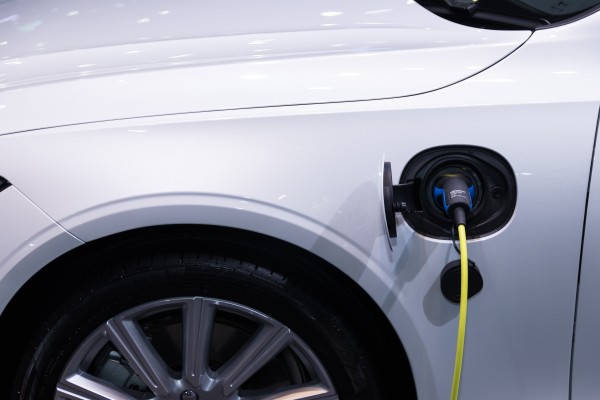Is it China or Europe- Where are the Electric Vehicle Market investors betting to get the best return and where is the money flowing?
25/05/2022 5 min read

What region scored the best in EV market?
In 2020, Battery Electric Vehicles made up two-thirds of new electric car registrations and two-thirds of the stock with over 10 million units sold in 2020 which was a recoded 43% increase over 2019. Among these car registrations, China accounted for the largest fleet, with 4.5 million electric vehicles, whereas Europe saw the largest annual rise, with 3.2 million vehicles sold in 2020.

Although, the electric vehicle market was among the many industries that faced economic ramifications due to Covid-19 leading to which new car registrations fell by a third in the first half of 2020, compared to the previous year, stronger activity in the second half somewhat countered this resulting in a 16% Y-O-Y reduction in overall activity. With traditional and overall new automobile registrations declining, the global electric car sales share increased by 70% to a record 4.6% in 2020.
The lost hope in the Electric Vehicle market was now gaining confidence and stepping back on its feet to gather more market share and ROI opportunities. The above analysis is a synopsis of what was taking place throughout the globe in the EV market. To understand how the Electrical Vehicle market was phasing along different regions, let’s look at the regional analysis.
Analysis of Europe
In 2020, the European automobile market shrank by 22%. Nonetheless, new electric vehicle registrations more than doubled to 1.4 million, accounting for a 10% market share.
Despite the economic downturn, Europe saw a boom in electric car registrations. Economic stimulus packages and CO2 limits that limit emissions per km driven are the new reasons of what is driving the new electric vehicle registrations in Europe.
This happened due to two regulatory changes.
1. The European Union set 2020 as the deadline for new automotive CO2 emissions regulations, which sets a restriction on the average CO2 emissions per kilometre driven.
2. As part of stimulus packages to combat the consequences of the pandemic, many European governments extended EV subsidy schemes.
These two decisions to adapt to electric vehicles was welcomed by an increase in consumer spending of up to US $120 billion which was a 50% increase from 2019 breaking down into 41% coming from increase in sales and rest 9% coming from increase in average prices.

Source: ACEA
Analysis of China
In the first half of 2020, new electric vehicle registrations were lower than the general auto market. In the second half of the year, this tendency reversed as China slowed the pandemic. As a result, the company's sales share increased to 5.7% from 4.8% in 2019. Around 80% of all new electric vehicles registered were Battery Electric Vehicles.
In the thick of the pandemic, China's electric car market has been hampered by key legislative decisions. Purchase subsidies were set to expire at the end of 2020, but after indications that they might be phased down more gradually prior to the epidemic, they were instead slashed by 10% and extended to 2022 in April 2020.

To get more insights on the above market,click here
According to the analysis done by SkyQuest, as of now, Asia Pacific holds the largest market share in the electric vehicles market so key manufacturers have a prime focus to generate more sales figures in emerging countries like China, India, and Brazil. Also, some of the players in the market emphasized the expansion of existing facilities and setting up corporate office in Asia Pacific to benefit from economies of scale and increase their global market shares.
Analysis of other worthwhile regions
In 2020, other countries' electric car marketplaces were deafeningly silent. In Canada, for example, the new automobile market has decreased by 21%, while new electric vehicle registrations have remained relatively stable at 51,000 since last year.
A significant exception is New Zealand. Despite its high viral response, new electric car registrations fell by 22% in 2020, in line with a 21% fall in the overall car market. The drop appears to be due in large part to unusually low electric vehicle registrations in April 2020, when New Zealand was under lockdown.
In 2020, China's electric LCV registrations were 3,400 units lower than the previous year, and slightly less than half of the peak in 2018. Battery Electric Vehicles make for the vast majority of electric LCV registrations, with Plug in Hybrid Electric Vehicles making up less than 10%.

Given all the regional analysis and the growing demand for electrical vehicle market, there will be a resultant increase in the demand for charging stations. As more and more people switch to either Battery electrical Vehicles or Plug in Hybrid Electric vehicles, let’s look at how the market is responding to the increase in demand
How are charging points changing the landscape of EV market?
While the majority of EV charging occurs at home and at work, the roll-out of publicly accessible charging will be crucial as countries that have led the way in EV deployment reach a point when EV owners will expect easier and improved autonomy.
In 2020, the estimation for publicly accessible chargers was 1.3 million, with 30% of them being fast chargers. Because work was disrupted in major areas owing to the pandemic, installation of publicly accessible chargers increased by 45%, a slower rate than the 85% witnessed in 2019. As of now, China has the most publicly available chargers including both slow and rapid.
Role and impact of Fast charging
In 2020, the number of fast chargers (those with a charging power greater than 22 kW) installed in China climbed by 44% to about 310, 000, a slower rate of growth than the 93% seen in 2019. The comparatively large number of publicly available fast chargers in China is intended to compensate for a lack of private charging choices and to help achieve speedy EV deployment goals.
Longer journeys are made easier with the availability of public fast chargers. As they become more widely used, they will allow for longer trips and entice late adopters who do not have access to private charging to buy an electric vehicle.
Role and impact of Slow charging
As per the recent reports from SkyQuest, in China, the number of publicly accessible slow chargers climbed by 65% in 2020, to around 500, 000. More than half of the world's slow chargers are in this stockpile.
Europe bags the second place, with over 250, 000 slow chargers installed, with installations expected to increase by almost one-third by the end of the year. With more than 63, 000 slow chargers, the Netherlands leads Europe. Observing an following the process, slow charger stocks in Sweden, Finland, and Iceland witnessed a substantial increase by the end of 2020.
Mega charging infrastructure is also being developed at a regional level. Thanks to stimulus funds, Iberdrola, a Spanish multinational electric provider, has expressed interest in implementing mega charger infrastructure along Spain's heavy-duty freight truck corridors by 2025.
In September 2021, ElaadNL (the Dutch grid operators' EV knowledge centre), in collaboration with local and national government agencies, opened an open-access test centre for companies and academia that provides mega charger testing facilities. The West Coast Clean Transit Corridor Initiative in the United States plans to deploy charging stations capable of charging HDTs at a rate of 2 MW along important transit corridors from Mexico to the Canadian border by 2030.
Which areas are the best for you to invest?
With the growing trend of electric vehicle sales in the automotive sector, prominent electric vehicle manufacturers are teaming up with component manufacturers to lower the cost of production and improve sales. Following this trend, some players have recently entered the electric vehicle business and are contributing and looking forward to solutions to reduce the cost and expand the business of EV market so that more and more consumers all over the world can switch to a better and healthier environmental solution.
Some of the key funding raised by EV Start-ups in 2021
|
Month |
Start-ups |
What They Do |
Fundraising in (INR Cr) |
Investors |
|
October |
Ola Electric |
EV manufacturer |
1898 |
Temasek, Falcon Edge, SoftBank Group and others |
|
September |
Blusmart |
EV ride-hailing |
186 |
BP Ventures |
|
November |
Simple Energy |
EV manufacturer |
156 |
UiPath, Sattva Group, Athiyas Group |
|
March |
Revolt Motors |
EV manufacturer |
150 |
RattanIndia Enterprises |
|
December |
Ultraviolette Automotive |
Electric bike manufacturer |
130 |
Zoho Corporation |
|
May |
Magenta EV Solutions |
EV charging solutions provider |
120 |
Dr Kiran C Patel, JITO Angel Network |
|
March |
Euler Motors |
EV developer |
94 |
Inventus Capital India, Jetty Ventures,Emergent Ventures,Blume Ventures, .. |
|
October |
Log 9 Materials |
EV battery manufacturer |
75 |
Amara Raja Batteries, Petronas Ventures |
|
July |
Lohum Cleantech |
Battery manufacturer |
52 |
Baring Private Equity Partners India, Talbros Automotive and others |
|
December |
MoEVing |
Electric mobility technology platform |
40 |
D.S. Brar, Anshuman Maheshwary, Srihari Raju Kalidindi, D.N. Reddy and others |
|
December |
Exponent Energy |
Rapid charging startup |
38 |
YourNest VC, 3one4 Capital, AdvantEdge VC, Motherson Group |
|
September |
Revos |
EV infra startup |
30.15 |
Union Square Ventures & Prime Venture Partners |
|
October |
RevFin |
EV digital lending platform |
30.15 |
Redcliffe Life Solutions, Knam Marketing, Let’s Venture Angel Fund, CarDekho |
|
July |
Ati Motors |
Electric autonomous industrial vehicle maker |
26.12 |
Blume Ventures and Exfinity Venture Partners and others |
According to SQ analysis, the range of anticipated EVs is extensive, so the pull-ahead in start-ups is substantial, and they are tripling the speed of product development. Confusion in the supply chain has emerged as a key concern for private equity firms as well as entrepreneurs in the post-pandemic period. Nonetheless, the EV industry will continue to be appealing to investors owing to the greater returns it provides compared to other businesses.
Reach your goals with data that will give you deep-rooted insights into your industry.





















 USA (+1) 351-333-4748
USA (+1) 351-333-4748
